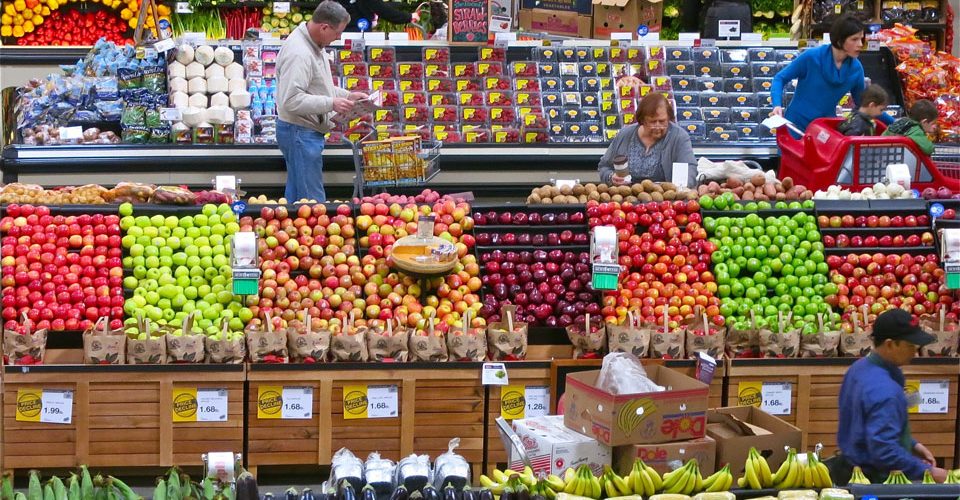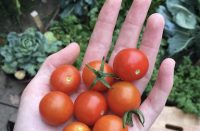It won’t come as a surprise to most that we waste a significant amount of food as a society. We’ve all experienced that moment at the restaurant when we realize we won’t be able to finish what’s on our plate or that moment we find the strawberries in our fridge have grown fuzzy mold. I always feel a certain amount of guilt when this happens to me, not only because throwing out food feels like throwing out money, but because I know there are so many people in the world that go hungry every day.
It won’t come as a surprise to most that we waste a significant amount of food as a society. We’ve all experienced that moment at the restaurant when we realize we won’t be able to finish what’s on our plate or that moment we find the strawberries in our fridge have grown fuzzy mold. I always feel a certain amount of guilt when this happens to me, not only because throwing out food feels like throwing out money, but because I know there are so many people in the world that go hungry every day. Here in Canada, as many as one in eight families struggles to put food on the table. On top of that, the environmental impacts of wasted food are enormous.
According to a United Nations report, every year 1.3 billion tonnes of food is wasted globally, roughly one third of the global food supply. People often don’t think about the environmental impacts of food waste because it is biodegradable. It seems less disastrous to dispose of those moldy strawberries than it does the plastic container they came in; however, decomposing food in landfills is responsible for emitting 3.3 billion tonnes of greenhouse gasses into the atmosphere every year, much of it in the form of methane.
When you consider the resources required to produce food that just ends up as waste, the environmental impacts become even more severe. About 1.4 billion hectares of land (28 per cent of the world’s agricultural land) is used to grow food that is ultimately thrown away and the water that is used could meet the water needs of about 500 million people, not to mention the fossil fuels, labour and machinery that are also needed – all to produce food that winds up in a landfill.
Food becomes waste for a number of reasons and although you’ll hear rumours that most food waste happens in the home, it’s fairly evenly divided between household and supply chain waste, with about 50 per cent happening at home. This is not to downplay our own role in reducing food waste, but to demonstrate that a significant portion of food waste occurs before it even makes it into your fridge.
One of the major culprits of food waste is aesthetics. Over 30 per cent of fruits and vegetables in North America will be rejected by supermarkets for not being the right size or shape, having too many blemishes or being unattractive in some other way.
Over 30 per cent of fruits and vegetables in North America will be rejected by supermarkets for not being the right size or shape, having too many blemishes or being unattractive in some other way.
In response to this aesthetic rejection, Intermarché (the third largest supermarket in France) and Marcel Worldwide started a marketing campaign for what they’ve termed Inglorious Fruits and Vegetables. They purchased fruits and vegetables that would normally be thrown out and sold them at 30 per cent less than their more aesthetically pleasing siblings. It’s truly a win-win-win situation as customers save money, producers sell food they would otherwise throw away, and the store increases traffic. It was such a success that they had trouble keeping up with demand and five of their competitors launched similar offers.
Gleaning is another way to reduce food waste between the field and the table. A lot of produce is often left behind in the fields sometimes for not meeting selling standards of size and shape, sometimes because a bumper crop has driven prices down and harvesting isn’t economical or simply because a certain amount of produce is left behind after mechanical harvesting. The practice of gleaning dates back hundreds of years when poor people would be allowed to gather food that farmers had left behind in the fields after harvest. Today, gleaning programs can be found across North America, often in the form of volunteer groups that glean food from fields to be donated to food banks and food programs in nearby communities.
Of course neither of those initiatives address the food waste that occurs a little further down in the line, in restaurants or institutions such as schools and hospitals. In response to the enormous waste that occurs in food establishments, Ina Andre and Joan Clayton started Second Harvest, a food rescue program that delivers excess fresh food donated by various retailers to over 200 different community agencies across Toronto, including food banks, shelters, community centres and health centres. They have rescued and delivered more than 95 million pounds of food since they began in 1985, enough food to provide over 20,000 meals a day.
Students at the University of Northern British Columbia in Prince George have undertaken a similar effort to divert food waste and provide food for those in need. Their food recovery project recovers surplus food from their dining hall to be picked up by the Society of St. Vincent de Paul. They’ve also set up a twitter account under the handle @UNBCScraps that informs students where extra food from conferences and special events on campus can be picked up, which not only prevents food from entering landfills, but provides students on a tight budget with occasional free meals.
Reducing food waste, or diverting that waste elsewhere makes sense socially, environmentally and financially. Initiatives such as Inglorious Fruits and Vegetables and organizations like Second Harvest provide excellent models for reducing food waste and making food more accessible to those who need it. And the best thing about working to reduce food waste is that anyone can start right now in their own kitchen. That’s where half of our food is wasted, after all. Check out these tips from A\J and more from David Suzuki to start. And get creative. Embrace those leftovers. Maybe even keep an eye out for some ugly produce.
Genevieve is earning her master’s degree in Environmental Studies at York University with a focus on sustainable food systems, food education and food literature. In The Mouthful, she blogs about the environmental politics and possibilities of food. Genevieve is a certified pastry chef and aspiring novelist. She lives in Toronto. @GFullan













